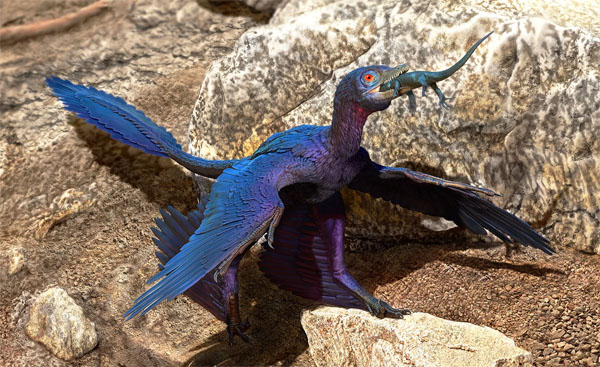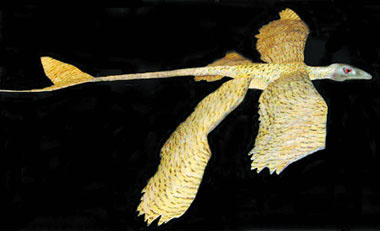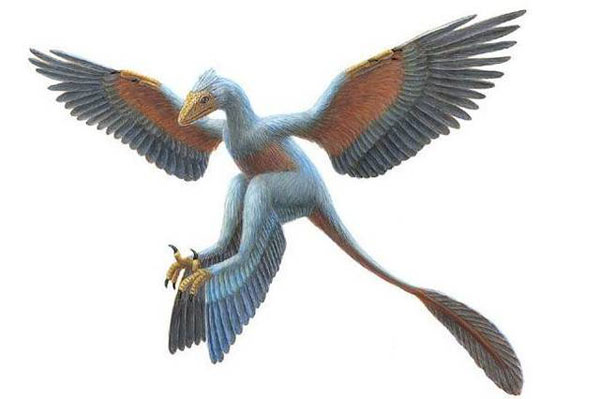How do birds learn to fly? Were the earliest birds arboreal creatures that glided from trees to the ground, or were they bipedal land animals that evolved wings and developed a preference for long-distance hopping? Researchers have not formed a unified understanding of this.

In recent years, researchers have tried to use mathematical analysis and computer simulations to determine the flight capabilities of early birds, built physical models based on fossils, and conducted wind tunnel tests. David Alexander, a biomechanics expert at the University of Kansas in Lawrence, USA, and his colleagues at the University of Kansas and Northeastern University in Shenyang, China, used different ideas to reconstruct a Microraptor model for experimental research. Microraptor is a bird-like dinosaur, a deinonychus known for its four wings.

A foam model of a four-winged dinosaur reveals how it glided through the woods. (Image provided by: David Alexander et al., Proceedings of the National Academy of Sciences)
The researchers first made a skeleton based on fossil bones, used clay to restore the "body" shape, and then selected modern pheasant feathers that perfectly matched the feather impressions preserved on the fossil to make wings. The researchers replicated the model using polyurethane foam. The researchers launched the polyurethane foam models of Microraptor from different altitudes and recorded the distance, speed and angle of each glide. Researchers reported in the online version of the Proceedings of the National Academy of Sciences on January 25, 2009: "Microraptor was a sophisticated 'glider,' but if it wanted to glide from one tree trunk to another, tree trunks, there should be no difficulty." Therefore, early birds may have started their flying career by gliding between trees.

Alexander, who said he joined the paleontologist's team because of his background in aircraft models, said he was not aware of any other research team that had managed to model dinosaur flight. Zhou Zhonghe, a paleontologist at the Institute of Vertebrate Paleontology and Paleoanthropology of the Chinese Academy of Sciences in Beijing, believes that this new method "may be one of the most effective ways" to determine the flight capabilities of extinct animals. He expects similar experiments based on fossils of other animals will help clarify how bird flight originated.

Julia Clarke, a paleontologist at the University of Texas at Austin, agrees that these models are useful, but they will be limited by anatomical understanding. In the case of Microraptor, she said, "I don't believe that real-life animals would adopt some of the postures they adopted in the study." Clarke also believes that the research team has moved beyond the arboreal or terrestrial hypothesis to consider more nuanced issues, such as the anatomical evolution factors that drive flight.
animal tags: birds microraptor dinosaur origin
We created this article in conjunction with AI technology, then made sure it was fact-checked and edited by a Animals Top editor.